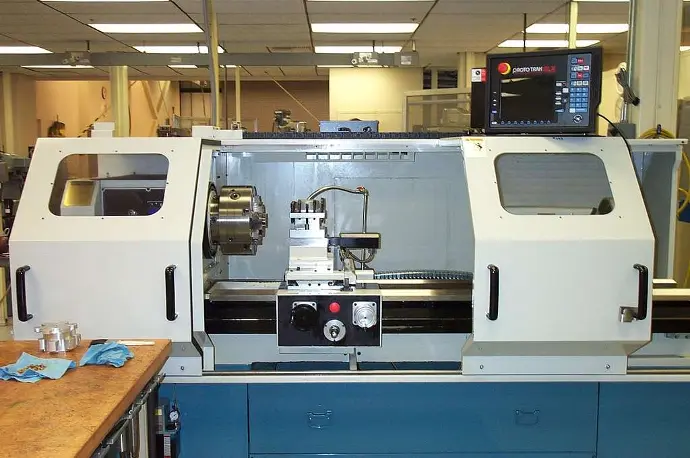Introduction
Over the years, CNC machines have become increasingly popular in various manufacturing sectors. These machines automate processes such as cutting, drilling, milling, and turning using computer numerical control (CNC) technology.
They enable the precise and accurate production of complex designs and parts. CNC machines are categorized primarily into 3-axis and 5-axis machines, each differing in their capabilities regarding the number of axes of motion. This article explores the advantages and disadvantages of both 3-axis and 5-axis CNC machines.
What is CNC?
CNC (Computer numerical control) refers to the use of
computers to direct the motion of manufacturing machinery.
Most CNC machines perform functions that are also found on
manual machining devices but depend on a computer program
to direct the motion instead. That makes the cutting tool’s
movements very precise and generally results in higher-quality
parts than those made with manual drill presses, lathes, etc.
What is 3-Axis CNC?

A 3-axis CNC machine operates by maneuvering its tool or the workpiece along the X, Y, and Z axes during machining operations. The cutting tool can traverse the horizontal X-Y plane and adjust depths of cuts along the Z-axis.
What Can a 3-Axis CNC Do?
A typical 3-axis CNC machine is capable of carrying out a variety
of machining tasks, including: cutting, drilling, and milling.
Others are designed as CNC lathes. However, in terms of part
complexity, the constraint of those three axes means the
machine has some distinct limitations. The best 3-axis machines
are used to produce parts with straightforward geometries and
minimal design or detail requirements. 2D and 2.5D parts are
the best targets for 3-axis CNC machines.
Get Your Free Quote Today
Don't wait any longer on your project!
What are 3-Axis CNC Examples?
Examples of 3-axis CNC devices are:

Turning Machines
These machines are frequently employed in sectors like
automotive, aerospace, and electronics.

Milling Machines
What are the Pros and Cons of 3-Axis CNC Machining?
Pros
Cost-Effective
3-axis CNC machines offer a more budget-friendly option
User-Friendly
Operating 3-axis CNC machines requires minimal training and is straightforward compared to 5-axis machines
Low Maintenance
With fewer moving parts than 5-axis CNC machines, 3-axis models are easier to maintain
Cons
Limited Capability
Without the ability to automatically rotate the workpiece, 3-axis machines are restricted to specific cutting angles, making them suitable primarily for parts with simple geometries
Limited Efficiency
Compared to 5-axis CNC machines, 3-axis machines are less efficient due to the need for multiple setups to manufacture complex parts
What is 5-Axis CNC?
A 5-axis CNC machine executes machining operations across five axes of motion. It moves along the three linear axes (X, Y, and Z) and rotates around the other two axes (A and B). This broader range of motion allows the machine to create complex geometries.

What Can a 5-Axis CNC Do?
A 5-axis CNC machine excels in creating complex geometries requiring multiple angles and contours. By moving the cutting tool along five axes, it achieves smoother surfaces and more precise parts. Continuous milling capabilities allow the tool to follow material curvatures, minimizing marks and steps.
What are the Pros and Cons of 5-Axis CNC Machining?
Pros
Enhanced Efficiency
5-axis machines accelerate production and enhance efficiency by handling complex shapes and performing continuous milling operations.
Enhanced Precision
With the ability to maneuver along five axes, these machines produce smoother surfaces and more precise components.
Decreased Tool Changes
Continuous milling allows for intricate geometries, minimizing the necessity for tool changes and reducing manual intervention, thereby saving time.
Cons
Cost
5-axis CNC machines come at a higher price point compared to 3-axis CNC machines
Training
These machines demand specialized training and expertise due to their complexity, necessitating a higher level of skill to operate and maintain effectively.
Maintenance
Regular maintenance is crucial to ensure optimal performance and prevent potential breakdowns in these sophisticated machines.
The Difference Between 3 and 5-Axis CNC Machining?
A 3-axis CNC machine and a 5-axis CNC machine differ in their capabilities to orient and move the cutting tool across multiple axes. A 3-axis CNC machine operates along the X, Y, and Z axes, while a 5-axis machine adds movement along the A and B axes, allowing for more complex machining operations.
In terms of cost, the 3-axis version is significantly more affordable to purchase, program, and operate, resulting in lower per-part costs. One key advantage of the 5-axis machine is its ability to handle complex shapes with deep cuts from various angles without the need to manually reposition the workpiece, thus enhancing productivity. In contrast, a 3-axis machine requires multiple adjustments to maneuver around complex geometries efficiently.
Summary
This article explored 3-axis and 5-axis CNC machines, detailing their functionalities and examining their respective strengths and limitations. For further insights into 3-axis and 5-axis CNC machining, please reach out to Accurate Machine Products.
Accurate Machine Products provides a wide range of manufacturing capabilities, including CNC machining and other value-added services for all of your prototyping and production needs. Visit our website to learn more or to request a free, no-obligation quote